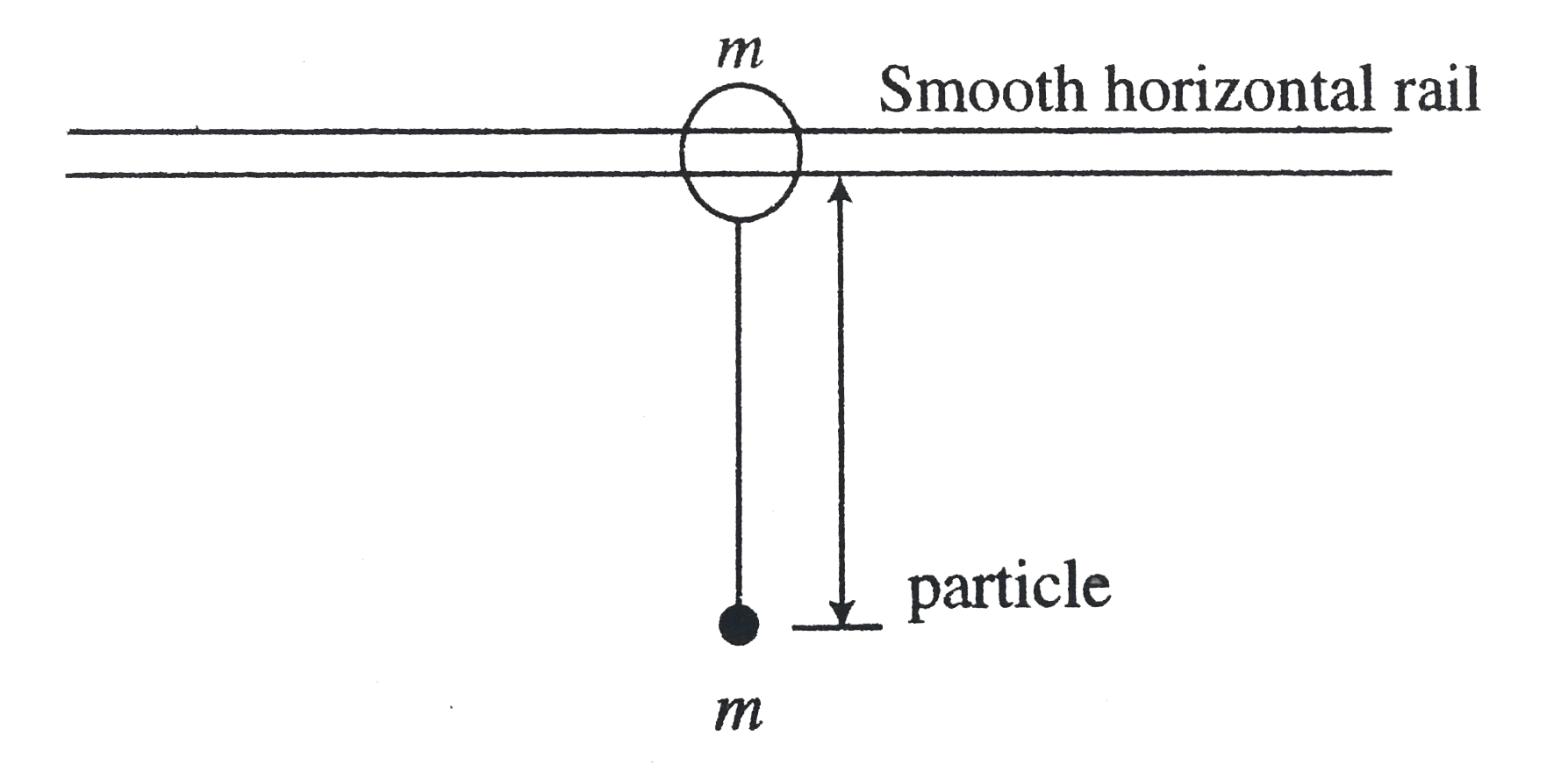The activity of a sample reduces from A0toA0√3 in one hour. The activity after 3 hours more will be
A03√3
A09
A09√3
A027
The correct Answer is:B
To solve the problem, we need to determine the activity of a radioactive sample after a total of 4 hours, given that its activity reduces from A0 to A0√3 in the first hour.
1. Understanding Activity Reduction:
The activity of a radioactive sample decreases over time according to the formula:
A(t)=A0e−λt
where A(t) is the activity at time t, A0 is the initial activity, and λ is the decay constant.
2. Finding the Decay Constant:
From the problem, we know that after 1 hour (i.e., t=1 hour), the activity reduces to:
A(1)=A0√3
Plugging this into the activity formula gives:
A0√3=A0e−λ⋅1
Dividing both sides by A0 (assuming A0≠0):
1√3=e−λ
3. Taking the Natural Logarithm:
Taking the natural logarithm of both sides:
−λ=ln(1√3)=−12ln(3)
Thus, we find:
λ=12ln(3)
4. Calculating Activity After 4 Hours:
We want to find the activity after a total of 4 hours, which means we need to calculate A(4):
A(4)=A0e−λ⋅4
Substituting λ:
A(4)=A0e−4⋅12ln(3)=A0e−2ln(3)=A0(eln(3))−2=A0(13)2=A09
5. Activity After 4 Hours:
Therefore, the activity after 4 hours is:
A(4)=A09
Final Answer:
The activity after 4 hours will be A09.
---
The activity of a radioactive sample decreases over time according to the formula:
A(t)=A0e−λt
where A(t) is the activity at time t, A0 is the initial activity, and λ is the decay constant.
From the problem, we know that after 1 hour (i.e., t=1 hour), the activity reduces to:
A(1)=A0√3
Plugging this into the activity formula gives:
A0√3=A0e−λ⋅1
Dividing both sides by A0 (assuming A0≠0):
1√3=e−λ
Taking the natural logarithm of both sides:
−λ=ln(1√3)=−12ln(3)
Thus, we find:
λ=12ln(3)
We want to find the activity after a total of 4 hours, which means we need to calculate A(4):
A(4)=A0e−λ⋅4
Substituting λ:
A(4)=A0e−4⋅12ln(3)=A0e−2ln(3)=A0(eln(3))−2=A0(13)2=A09
Therefore, the activity after 4 hours is:
A(4)=A09
The activity after 4 hours will be A09.
Topper's Solved these Questions
- MODERN PHYSICSBOOK - DC PANDEY ENGLISHCHAPTER - MODERN PHYSICSEXERCISE - for JEE Advanced (only one option is Correct)
76 Videos
- MODERN PHYSICSBOOK - DC PANDEY ENGLISHCHAPTER - MODERN PHYSICSEXERCISE - for JEE Advanced (More than One Options is Correct )
1 Videos
- MAGNETISM AND MATTERBOOK - DC PANDEY ENGLISHCHAPTER - MAGNETISM AND MATTEREXERCISE - Medical gallery
1 Videos
- MODERN PHYSICS - 1BOOK - DC PANDEY ENGLISHCHAPTER - MODERN PHYSICS - 1EXERCISE - Level 2 Subjective
23 Videos
Similar Questions
Knowledge Check
The activity of a radioactive sample is measures as N0 counts per minute at t=0 and N0/e counts per minute at t=5min. The time (in minute) at which the activity reduces to half its value is.
Aloge25B5loge2C5log102D5loge2
After 225 days the activity of a sample is 4000 decay/s. The activity reduces to 2000 decay/s after another 75 days. The initial activity of the sample is
View SolutionThe activity of a radioactive element decreases in 10 years to 1/5 of initial activity A0. After further next 10 years, its activity will be
View SolutionAfter 280 days, the activity of a radioactive sample is 6000 dps. The activity reduces to 3000 dps after another 140 days. The initial activity of the sample in dps is
View SolutionThe half-life of a radioactive nucleus is 20 hours. What fraction of original activity will remain after 40 hours?
View SolutionThe activity of a radioactive element decreases to one third of the original activity I0 in a period of nine years. After a further lapse of nine years, its activity will be
View SolutionThe activity of a radioactive sample is measures as N0 counts per minute at t=0 and N0/e counts per minute at t=5min. The time (in minute) at which the activity reduces to half its value is.
View SolutionThe ring shown in fig. is given a constant horizontal acceleration (a0=g√3). The maximum deflection of the string from the vertical is θ0. Then

View Solution
